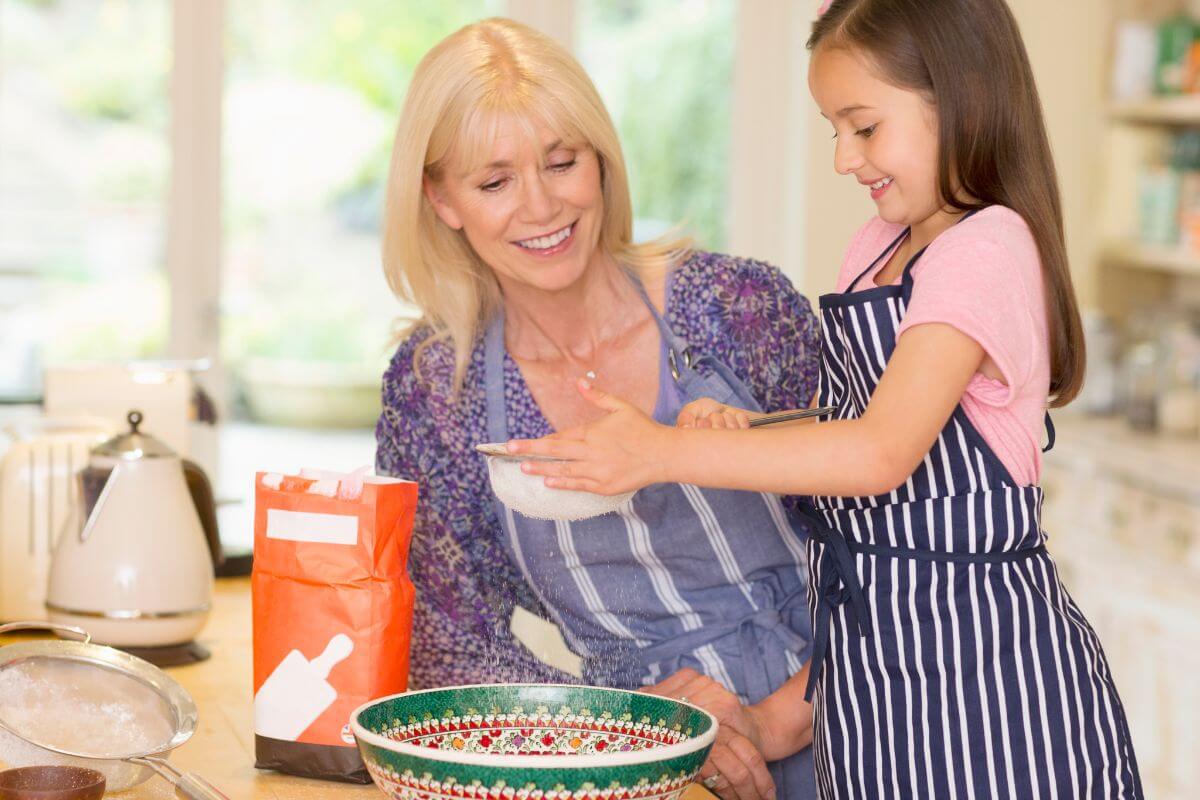Design Tips for Creating an Age-Inclusive Kitchen
Imagine a kitchen where everyone in your family, from your youngest child to your oldest grandparent, can cook, eat, and move around with ease. More and more of us need this kind of space in our homes as we face multigenerational lifestyles.
Come along with me as I explore design tips for creating an age-inclusive kitchen, including benefits and practical steps, that will help me sleep better at night knowing my parents have access to a safe kitchen space.
By incorporating thoughtful design elements, you can create a kitchen that meets the needs of every family member, making daily tasks smoother and more enjoyable. We especially have to consider the physical health and ergonomic problems that older people face in kitchen life as they age — for example flexibility, touch, bending, dexterity, and vision acuity. So let’s look at design tips for creating an age-inclusive kitchen!
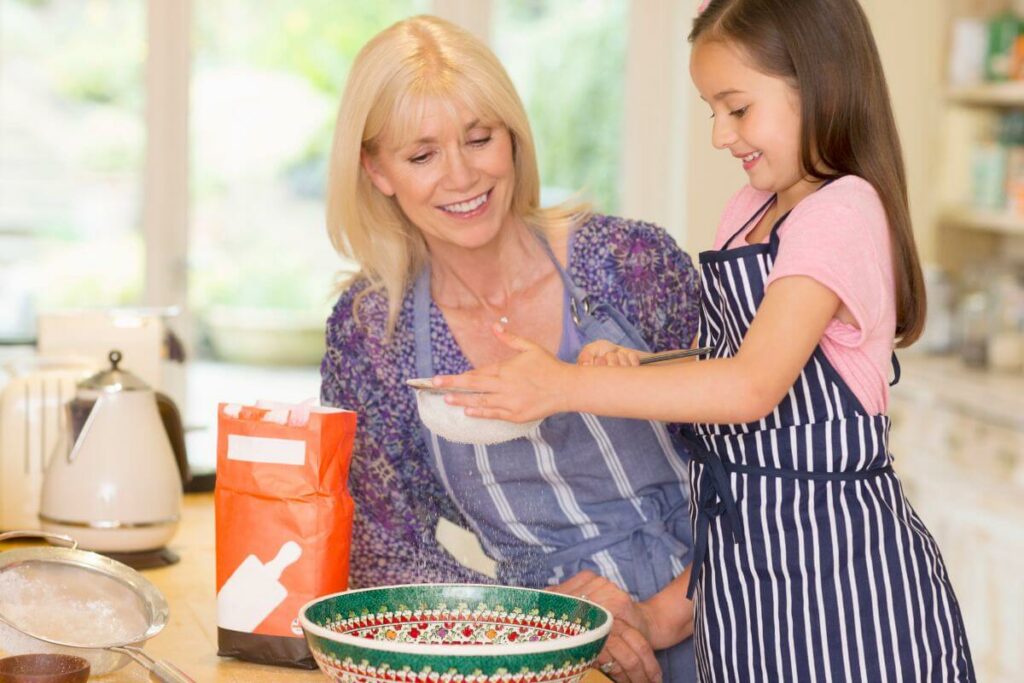
Key Takeaways
- An age-inclusive kitchen enhances safety and accessibility for all family members, from young children to elderly adults.
- Thoughtful design elements like easy-to-reach storage and non-slip floors promote better health and hygiene.
- Creating an age-inclusive kitchen supports multigenerational living, making daily tasks more convenient and enjoyable for everyone.
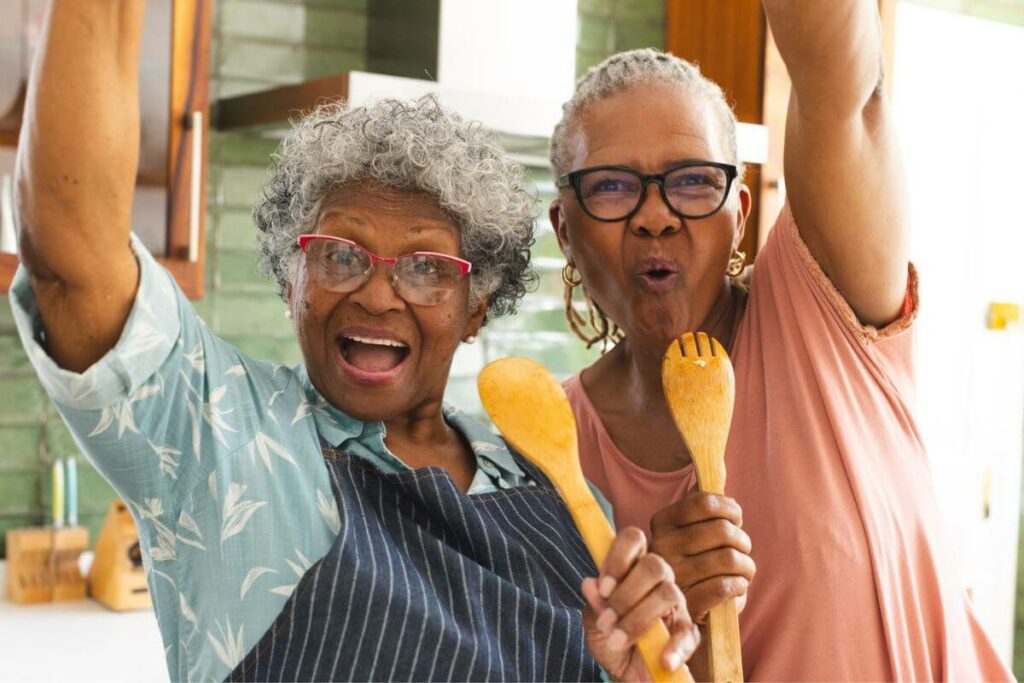
Why is There a Need to Design an Elderly-Friendly Kitchen?
In today’s world, the kitchen demands a design targeted at the needs of people across generations. It is no longer just about designing an efficient and ergonomic kitchen but also one that caters to the intergenerational differences in physical activity, perception, age, and lifestyle to ensure that the kitchen remains functional for all.
Inclusive Design Approach
An inclusive design aims to create an environment that can be used by people of all ages and abilities. In the context of the kitchen, this means taking into account the multifaceted needs of the elderly, including people with limited mobility, visual impairments, or limited dexterity. With multigenerational living becoming a way of life for more and more families, we need to address an inclusive design approach.
Work Environment Optimization
Older adults may need a kitchen design that minimizes unnecessary movement and allows easy access to frequently used items. Design strategies include placing frequently used items within easy reach, optimizing countertop levels for different heights and mobility aids, and providing adequate space for moving about in the space.
Additional age-friendly features include height-adjustable countertops, pull-out tables and touch-free faucets to accommodate different physical abilities and preferences.
Lighting Considerations
Natural light can improve visibility and create a more welcoming atmosphere in the kitchen. Large windows or skylights can help maximize natural light. Additionally, installing bright lights in key areas can improve visibility, especially for the visually impaired, regardless of age.
Flooring and Safety Features
Slip-resistant flooring is essential to prevent accidents, especially in areas where water spills are common. Choose flooring materials with a textured surface or add non-slip mats to wet floors. Installing grab bars near wet areas such as sinks can provide additional support.
Cabinet and Storage Solutions
Choose cabinets with easy-to-reach shelves and drawers and good handles or knobs that can be easily grasped by people with limited dexterity. Consider installing Lazy Susans or pull-out shelves in a corner cabinet to improve accessibility and maximize storage.
- Pro Tip: So your kitchen space can be designed to suit older adults, you need to source kitchen cabinets that make them a focal point of your kitchen layout. They obviously offer the essential kitchen space where you can store all your culinary kitchen equipment, including cook-pots, cutlery, tableware, food, and small appliances. Cabinets, therefore, provide order to the kitchen and encourage a clutter-free, systematic cooking environment where both speed and accessibility of the performer are undermined. It encourages efficient workflow and easy access for the elderly.
Clear Signage and Labels
Clear signage and labeling can help visually impaired or cognitively impaired people navigate the kitchen. Use high-contrast colors and large, legible fonts on cabinets, drawers, and appliance labels to improve visibility.
Mobility Aid Accessibility
Make sure the kitchen layout accommodates mobility aids such as wheelchairs or walkers. This can mean widening doorways, creating clear pathways between kitchen units and ensuring countertops are at an appropriate height for wheelchair users.
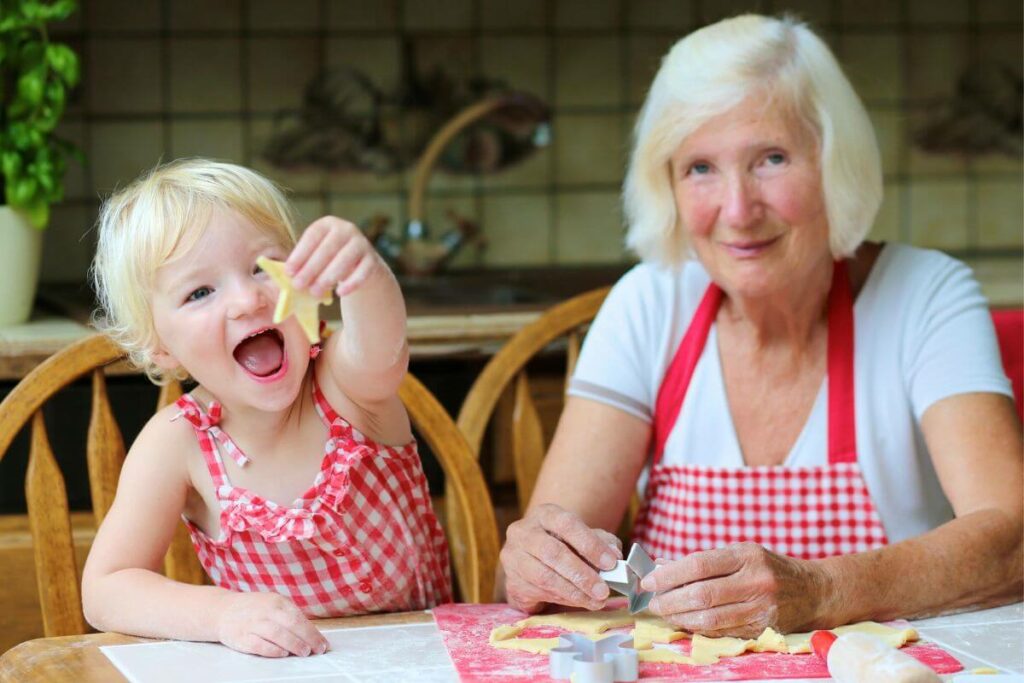
Additional Considerations for Creating an Age-Inclusive Kitchen
Times have clearly changed in recent years since the pandemic has heightened the demand for safety and hygiene. Additionally, financial issues in a somewhat volatile economy are causing more families to consider multigenerational living. We must consider these changes when considering a safe, age-inclusive kitchen design for all family members.
Extended Time at Home
Stay-home measures such as self-isolation and remote work have been pushed since the pandemic. Many people have never returned to the office and are home for meals.
The kitchen is no longer only a place for nutrition or a space for eating. Kitchens that can offer the versatility needed in a multigenerational household, where older adults may have restrictions to mobility or accessibility, are greatly desirable as people spend more time at home.
Aging in Place Preference
The pandemic triggered a reconsideration of living arrangements as many older adults show a propensity to remain in their original home instead of moving into senior living modules or nursing home facilities.
Consequently, there has been a trend in retrofitting spaces in the house to ensure that older people can live independently and comfortably as they age. This entails improving the efficiency and effectiveness of kitchens, ensuring new ways to make them more accessible and functional to seniors.
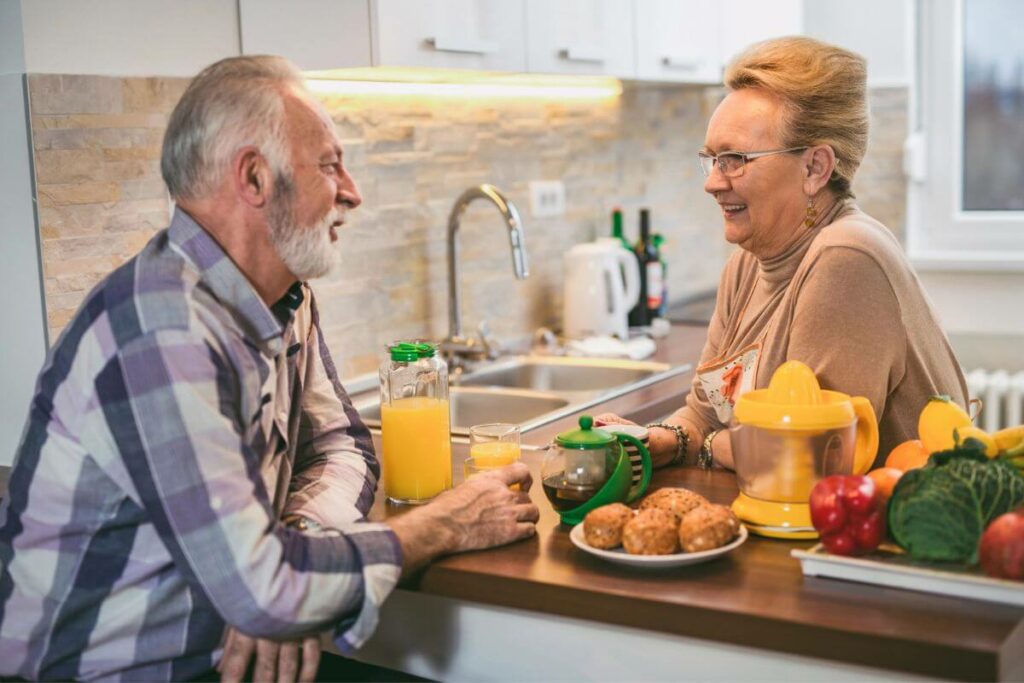
Health and Hygiene Concerns
The recent pandemic revealed that having a system in place that ensures all essential areas are kept clean and hygienic is of great importance as far as the prevention of infectious diseases is concerned.
Hence, dirty kitchen countertops, which can be thoroughly cleaned and sanitized, are in huge hygiene trend, just like hand sanitizers. The features of the kitchen that have gained popularity lately include slip-resistant surfaces like ceramic tiles and countertops, touchless or sensor-activated fixtures, as well as hands-free appliances which ensure the cooking environment is safe and keeps the risk of contamination minimal.
These are family responsibilities that should be taken very seriously for all.
Technology Integration
In elderly-friendly kitchen designs now we can install smart tools and similar technologies for older people that make life easier and safer. Such examples may be voice activated controls, adjustable lighting, and remote monitoring systems that make cooking and catering more convenient, accessible, and safe.
Family Care Dynamics
While considering age-inclusive kitchen designs, it’s important to think about kitchen layouts that are designed for accessibility and safety so caretakers can do their job in the kitchen. Space and movement should be built into the design to avoid frustration for everyone involved.
We should also be considering tools that include varying countertop heights and solutions to reachable storage. It’s important for us to contribute to the autonomy of older adults so they feel valued and independent.
Increased Multigenerational Lifestyles
There are many different ways for families to deal with the aging population, but multigenerational living has become more common in recent years. Families are creating age-friendly homes where bathrooms, kitchens, bedrooms, and living spaces are designed to deal with mobility issues for older people.
The kitchen is often one of the last spaces that we consider when creating a home that supports an age-inclusive culture. While we consider generational differences in regard to safety and health, we don’t always look at the kitchen design. For example, best practice includes a dining space that avoids sharp corners, throw rugs, and clutter. A lazy susan can help older people easily reach items they need. Quality pots and pans with good grip handles are essentials in a kitchen for age inclusivity. Large, clear labels are important for elderly people as they develop vision issues.
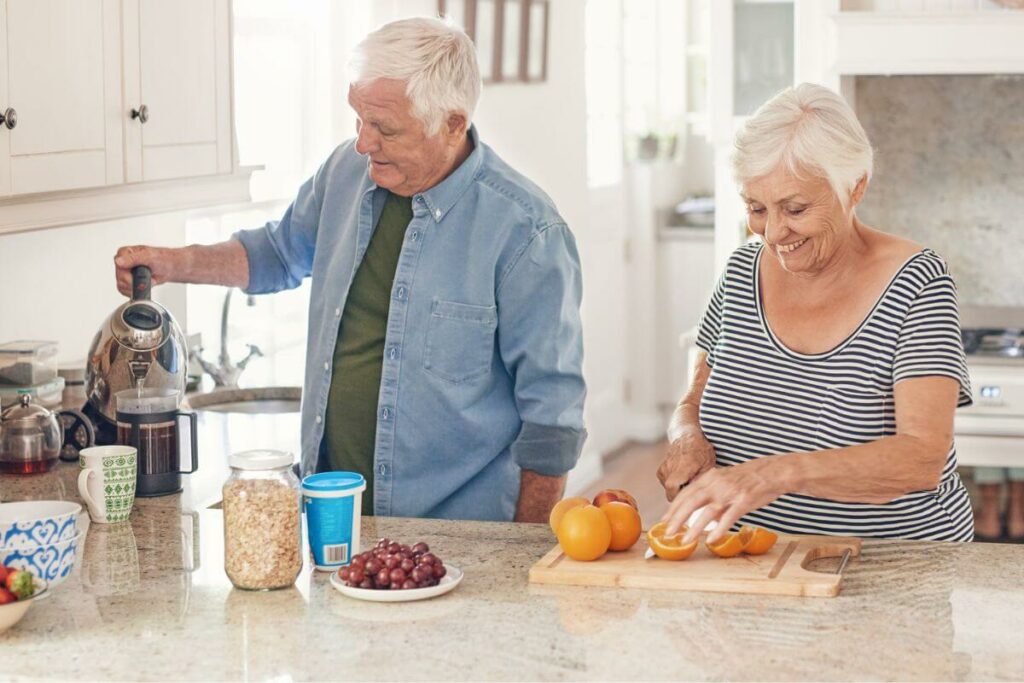
Final Thoughts: Creating an Age-Inclusive Kitchen
In conclusion, designing an age-inclusive kitchen ensures that all family members, regardless of age, can use the space safely and comfortably. This approach supports multigenerational living by making the kitchen accessible for everyone, from young children to elderly grandparents.
Moreover, an age-inclusive kitchen enhances health, hygiene, and overall efficiency. By incorporating features like easy-to-reach storage, safe appliances, and non-slip floors, you create a safer and more user-friendly environment. These thoughtful adjustments not only prevent accidents but also promote a more enjoyable and convenient kitchen experience for your entire family.
Finally, as more seniors wish to remain at their homes as they get older, it is crucial to realize the need for measures that will enable them to live independently in their home environment for longer. This includes adapting their home spaces for health and safety.
As a caregiver, there are many spaces in the home that need to be adapted for the elderly. You can find more helpful articles here on Sassy Sister Stuff because I have been the primary caregiver for both of my parents, plus other family members. Therefore, I have lots of experience about adaptations and safety tips. You may find the articles below helpful!
Related Articles:
- Essential Tips: Decluttering and Downsizing for Seniors
- 21 Simple Ways to Make Home Safe for Senior Citizens
- 9 Key Benefits of Living with Elderly Parents
- Senior Care Items to Improve Hygiene and Quality of Life
Love to ALL! ~ Susan

